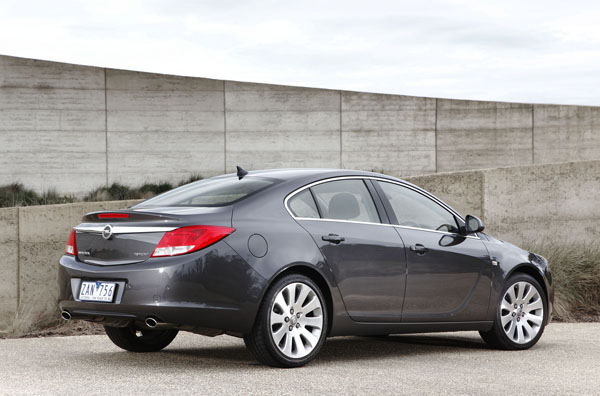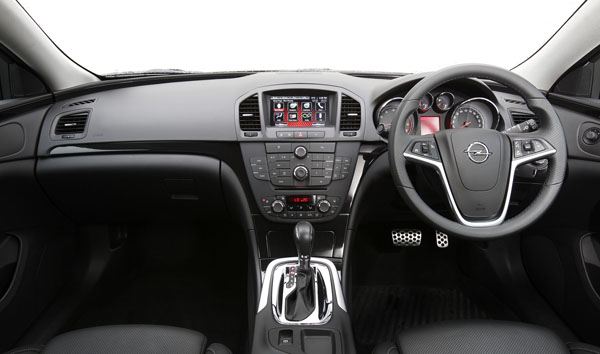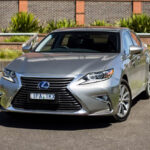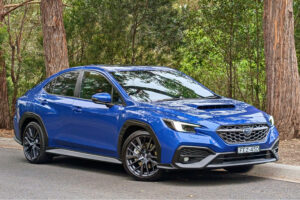Opel, the German arm of General Motors, produces a range of high-performance models stamped with the OPC suffix – for Opel Performance Center. So far, two of the sporty cars have come our way – the Corsa OPC and Insignia OPC, with the Astra OPC slated for release within weeks.
Since opening its doors in 1997, Opel Performance Center has increasingly used Nurburgring as a proving ground and in 2006 the Russelsheim automaker signed a partner contract with the legendary 20.8 kilometre Nordschleife race track and opened its own test centre at the ring, known for good reason, as the ‘Green Hell’.

Powered by a 2.8-litre V6 turbo-petrol engine pumping out 239 kW of peak power and a major 435 Nm of torque, it is Opel’s most powerful production car of all time. Mated with a six-speed automatic transmission, adaptive all-wheel drive, electronic limited-slip differential, the Insignia OPC will hit 100 kilometres an hour from rest in 6.3 seconds.
Fuel consumption is put by the maker at 10.9 litres per hundred kilometres on the combined urban / highway cycle. The test car used a lot more in city traffic at 15 to16 litres per 100 kilometres. Cruising on the motorway halved the consumption.
Engineers have endowed the OPC with distinctive and high performance chassis dynamics over the standard Insignia sedan. New suspension architecture ensures increased grip and sharper handling.

This is capped off with Opel’s FlexRide electronic system which adapts damping, among other things, to offer a range of driving experiences from stately sedan to a racetrack adrenaline rush. This system offers three dial-up ride and handling modes. Standard’ delivers all-round performance ideal for everyday driving, while in ‘Sport’ mode, the suspension stiffens and reduces body roll for more agility.
‘OPC’ goes the whole hog, with steering becoming more direct, the throttle more responsive and the chassis settings at optimal efficiency, while instrument dials get in on the act, lighting up in red.
The last mode goes even further, with a ‘bump’ sub-mode adding extra stiffness to damping, ensuring that wheels quickly regain road contact after hitting a bump and the ‘roll regulation’ sub-mode further reducing body roll.
Stopping has not been ignored, with the OPC attracting a substantially upgraded braking system from its Insignia sibling. Larger ventilated and cross-drilled discs and four-piston callipers have been added to the front. Special high performance brake pads also help to dissipate heat under continued brake use.
As well as the sizeable Opel badge, the front of the Insignia OPC is dominated by a pair of gaping air dams set to scoop up every breath of cooling air. These stand-out visuals are matched at the rear with dual satin chrome tipped trapezoidal exhausts.
An integrated spoiler tops off the rear, while the car rolls on standard 19-inch OPC exclusive alloy wheels, or 20-inch optionals.
Don’t worry about any unwelcome surprises popping up around bends in the dark. Adaptive Forward Lighting is able to illuminate around corners.
The cabin immediately states the car’s sporting credentials with Recaro front seats giving the nod to those used in racing. The head rest is integrated into the seat back with ‘tiger’ tooth slots in the shoulder aping the exit points on typical six-point racing belts and matching the air intakes in the front bumper.
The OPC high performance seats offer maximum support to occupants. Safety is boosted by airbags being integrated into the sides of the seats. The integrated head rest makes for correct adjustment.
The seats also boast industry-best adjustment ranges, including a height range of 65mm and length range of 270mm, allowing driver and passenger to find comfort and support.
With improved tilt adjustment, the seats are equipped with the cushion extension and four-way power lumbar support, while the driver enjoys a two-position memory feature.
The performance oriented driver also benefits from a flat-bottomed racing-style steering wheel with rake-and-reach adjustment, plus steering wheel-mounted paddle shifts.
With six airbags, active headrests and pedal release system, plus a full suite of active safety systems, all occupants are shielded from the most serious results of crashes.
A premium seven-speaker audio system with CD player, AM/FM tuner, MP3 compatibility and SD card reader, incorporates satellite navigation using a seven-inch colour information display. There’s also USB input with iPod connectivity and auxiliary input.
Without ‘doing a Nordschleife’, we got behind the wheel of an Insignia OPC for a substantial road test and were immediately taken by its dynamics. It was easy to drive among urban congestion, yet keen to please the enthusiastic driver on the open road.
Attention has obviously been paid to the aural experience too with a whisper quiet engine sound at idle being roused by throttle pressure until it roared under hard acceleration. A true sporting experience.
The Opel Insignia comes as a complete package for around $60,000, the only options being premium paint ($695) and 20-inch alloy wheels ($1000).
PRICING
Opel Insignia OPC 2.8T four-door sedan: $59,900 (automatic)
Note: This price does not include government or dealer delivery charges. Contact your local Opel dealer for driveaway prices.
SPECIFICATIONS (Opel Insignia OPC 2.8T four-door sedan)
ENGINE
Type: 2.8-litre turbocharged V6
Cylinders: Six; four valves per cylinder
Displacement: 2792 cc
Maximum power: 239 kW / 5250 rpm
Maximum torque: 435 Nm / 525 rpm
Fuel injection system: Sequential multipoint fuel injection. twin-scroll turbocharger with waste-gate and bypass valve. Intercooled
DRIVELINE
Six-speed automatic, adaptive 4×4, electronic limited-slip differential
DIMENSIONS, WEIGHT AND CAPACITIES
Length: 4830 mm
Width (including mirrors): 2084 mm
Height: 1498 mm
Wheelbase: 2737 mm
Turning circle: 11.40 m
Minimum tare mass: 1809 kg
Maximum trailer load: 1600 kg (braked), 750 kg (unbraked)
Fuel tank capacity: 70 litres
Cargo capacity: 500 litres (rear seats upright); 1015 litres (rear seats folded)
PERFORMANCE
Acceleration 0-100 km/h: 6.3 sec
FUEL CONSUMPTION AND EMISSIONS
10.9 litres / 100km; 255g of CO2 per kilometre (combined cycle)
Emission rating: Euro V
SUSPENSION AND BRAKES
Suspension: HiPerStrut (front), Multilink (rear); OPC chassis, lowered OPC FlexRide adaptive chassis control including Normal, Sport and OPC modes
Brakes: Brembo 4-piston front brake callipers. Cross-drilled brake rotors (front). Anti-skid, electronic stability control and traction control. Hill start assist
WHEELS AND TYRES
19-inch OPC-exclusive alloy wheels / 245/40R19-98Y HW4 tyres (standard)
20-inch OPC-exclusive alloy wheels / 255/35R20-97Y HW4 tyres (optional)












